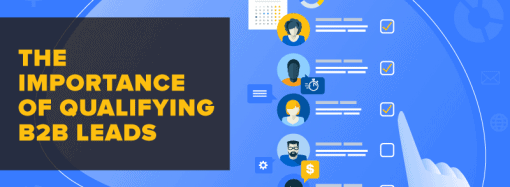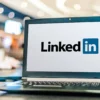Navigating The Complexities Of Plastics Marketing The plastics industry, known for its innovation and versatility, demands a marketing approach that reflects these characteristics. At Dream Factory Agency, we specialize in understanding the unique challenges of plastics companies, and advocating for strategic, data-driven marketing solutions. Our goal is to provide insights into modern marketing techniques that
Navigating The Complexities Of Plastics Marketing
The plastics industry, known for its innovation and versatility, demands a marketing approach that reflects these characteristics.
At Dream Factory Agency, we specialize in understanding the unique challenges of plastics companies, and advocating for strategic, data-driven marketing solutions.
Our goal is to provide insights into modern marketing techniques that are not only effective but also critical for staying competitive in this dynamic industry.
Digital Marketing: Harnessing the Power of Online Platforms
Digital marketing has become a cornerstone for plastics businesses seeking to broaden their market reach. With over 220 million users in the U.S., platforms like LinkedIn offer immense potential for industry-specific marketing efforts.
Effective use of digital channels requires a strategic approach – from creating compelling sponsored content that resonates with your target audience to engaging in meaningful community interactions.
These efforts position your brand at the forefront of industry conversations and can significantly enhance your visibility and influence. By seamlessly integrating these practices, plastics companies can set the stage for more in-depth, AI-enhanced content creation, blending modern technology with traditional marketing wisdom.
AI and Human Synergy in Content Creation

However, raw data and analytics, while informative, lack the nuance and emotional resonance that only human creativity can provide. This is where the artistry of skilled marketers comes into play. Humans excel at storytelling, crafting narratives that turn data points into compelling stories. They interpret AI-provided insights and weave them into narratives that resonate on a personal level with the audience. In the plastics industry, where topics can range from the technical specifics of polymer engineering to the broader environmental impact of plastics, the ability to translate complex information into engaging, understandable content is invaluable.
The interaction between AI and human creativity in plastics marketing is a powerful combination. AI algorithms, for instance, might reveal that there’s a growing interest in biodegradable plastics.
A human marketer could take this insight and develop a series of targeted content pieces—blogs, videos, infographics—that educate the audience on this subject and highlight how their company is innovating in this area. They can craft stories that showcase real-world applications, explain the science in layman’s terms, and perhaps most importantly, connect these advancements to the values and concerns of the audience.
Moreover, this collaboration between AI and human ingenuity is key in developing persona-based marketing strategies. AI can segment audiences based on various parameters such as industry role, interest level, and interaction history. Human marketers can then tailor content specifically for these segments, creating more personalized and relevant experiences. For example, a technical whitepaper might be ideal for R&D professionals, while an easy-to-understand video could be more suitable for decision-makers not deeply versed in technical aspects.
In conclusion, in the realm of plastics marketing, the melding of AI’s analytical prowess with human creativity doesn’t just improve the efficiency and quality of content—it revolutionizes it. This partnership allows for the creation of marketing materials that are both data-backed and deeply human, resonating with diverse audience segments in a way that is both informative and profoundly engaging.
ABM with Tailored Buyer Personas

Understanding the distinct buyer personas within the plastics industry is the cornerstone of this strategy. The range of personas in this field is broad, including engineers focused on the technical specifications and performance characteristics of materials, procurement professionals seeking cost-effective solutions, and decision-makers prioritizing sustainable and environmentally friendly products. Each of these personas has unique concerns, pain points, and motivations, making a generalized approach less effective.
By implementing an ABM strategy, a plastics marketing campaign can deliver highly personalized and relevant content to each of these distinct groups. For instance, an engineer might be more engaged with in-depth technical papers that delve into the material science behind a product, whereas a procurement officer might find more value in case studies demonstrating cost savings and supply chain efficiency. This level of personalization means that marketing resources are not wasted on broad, scattergun campaigns that fail to engage any one group effectively.
Furthermore, an ABM approach is inherently more cost-effective. By focusing resources on key accounts or specific segments of the market, companies avoid the higher costs associated with wide-reaching campaigns that have lower conversion rates. The targeted nature of ABM also means that each marketing dollar is spent more efficiently, as content and messaging are designed to resonate strongly with a well-defined audience, leading to higher engagement and conversion rates.
In addition to the direct content itself, ABM necessitates ongoing, strategic content curation. This is not merely about creating content but also about ensuring that it remains relevant and reflects current market trends and technological advancements. In the fast-evolving market segment of plastics, what was relevant six months ago might no longer resonate with your audience. Regularly reviewing and updating your content ensures that your messaging remains fresh, relevant, and aligned with the needs and interests of your target personas.
In conclusion, ABM offers a potent combination of effectiveness and efficiency in plastics marketing.
By understanding and addressing the specific needs of different buyer personas, companies can deploy more focused, impactful, and cost-efficient marketing strategies. This not only maximizes the return on investment but also establishes stronger, more meaningful connections with key segments of the market.
Content Curation for Market Relevance
Curating content in the plastics industry involves a strategic blend of industry news, technical advancements, and market trends. This practice ensures that your brand is not just a participant but a leader in industry discussions. For example, sharing insights on the latest sustainable plastics solutions or regulatory changes demonstrates your brand’s commitment to industry evolution.
Such ongoing engagement and thought leadership reinforce your brand’s position and pave the way for using specific language and terminologies that resonate with your technically informed audience.
Industry-Specific Language: Communicating with Precision

This detailed and accurate language use sets the stage for another critical aspect of plastics marketing: the continuous optimization and updating of your digital presence, especially your website.
Staying current with industry trends and meeting the high expectations of a well-informed audience is vital, underscoring the importance of high-quality, knowledgeable content in this sector.
Website Optimization: The Digital Frontline
Your website acts as a digital handshake, often the first point of interaction between your brand and potential clients.
Ensuring it’s up-to-date, user-friendly, and rich with relevant content is crucial. This means not only showcasing your products or services but also reflecting industry trends and thought leadership, establishing your site as a go-to resource in the plastics field.
Regular updates, an intuitive interface, and clear navigation enhance user experience and lead generation. These aspects of web optimization highlight the growing importance of incorporating diverse content formats, like video, to engage your audience effectively.
Leveraging Video Content for Enhanced Engagement

For instance, a video tour of a manufacturing process can offer clients a vivid glimpse into the efficiency and quality of operations. This visual engagement goes beyond mere attention-grabbing; it forges an emotional bond with the audience, paving the way for interactive experiences like webinars, which can substantially boost customer engagement and brand loyalty.
This shift towards video is backed by compelling data:
- Consumer behavior underscores this trend. Digital video viewers are expected to reach 3.5 billion globally. On average, people watch 17 hours of online videos per week in 2023, demonstrating video’s central role in their engagement with brands.
- The content type also matters. People are 52% more likely to share video content over other forms, highlighting its viral potential. Moreover, 75% of viewers engage with short-form video content on mobile devices, suggesting a preference for concise, accessible content.
- The optimal length for maximum impact appears to be under 60 seconds, as suggested by 83% of marketers. This indicates that brevity, combined with engaging storytelling, is key in video marketing.
Given these insights, it’s clear that video marketing is not just a trend but a critical component of modern plastics marketing strategies. By leveraging video content effectively, companies in the plastics industry can enhance their marketing impact, creating deeper connections with their audience and driving tangible business results.
Niche-Specific Webinars: Connecting with Your Audience
Webinars are increasingly becoming a cornerstone of effective marketing in the plastics industry. They offer a unique platform for deep dives into niche topics like the latest in recyclable materials or advances in 3D printing of plastics.
Hosting a webinar not only positions your company as a thought leader but also builds trust and respect in your expertise. The real-time interaction available in webinars is invaluable, allowing you to directly engage with your audience, understand their concerns, and refine your marketing strategies.
The significance of webinars in business marketing strategies is underscored by compelling data:
- A staggering 95% of businesses recognize the critical role of webinars in their marketing strategies. This overwhelming consensus points to the value webinars add in terms of reach and engagement.
- The investment in webinars is modest compared to their potential return, with the average cost of hosting a webinar ranging between $100 and $3,000. This makes webinars a cost-effective option, particularly for businesses looking to maximize their marketing budget.
- Driving webinar registrations through company websites is a strategy employed by 80% of B2B marketers, demonstrating the importance of integrating webinars into your digital presence.
- For generating high-quality leads, 73% of B2B companies rate webinars as the most effective tool. This highlights their capability to not just attract but also engage a relevant and interested audience.
- A focus on lead generation and sales is evident, with 76% of webinars designed with these goals in mind, underscoring their role in the sales funnel.
- The burgeoning webinar market, projected to reach $800 million by 2023, reflects the growing demand and effectiveness of this medium.
- In terms of engagement, an average webinar lasts between 39 and 60 minutes, indicating that audiences are willing to invest significant time if the content is relevant and engaging.
- The cost of hosting a webinar, averaging between $3,000 and $5,000, is justified by the substantial potential for lead generation and customer engagement.
- As a promotional tool, webinars are utilized by 58% of B2B marketers, reflecting their versatility and effectiveness in reaching target audiences.
- Beyond just lead generation, 60% of businesses use webinars to guide potential customers through the entire customer lifecycle, from awareness to decision-making.
- Webinars also play a critical role in customer training and onboarding, used by 31% of businesses, while 29% leverage them for demand generation and digital marketing.
These statistics clearly illustrate the value of webinars as a multi-faceted tool in the marketing arsenal of any company in the plastics industry. By integrating webinars into your marketing strategy, you can not only educate and engage your target audience but also drive leads and sales, positioning your business as a leader in the industry.
Mastering LinkedIn for Targeted Outreach

This focused approach ensures that your marketing initiatives not only reach the right audience but also resonate with them, enhancing your brand’s presence in professional communities.
The platform’s remarkable capacity for precision targeting underscores the growing significance of marketing automation in contemporary business strategies. This approach offers multiple benefits:
- Data-Driven Targeting: LinkedIn’s rich data on user profiles and behavior enables businesses to target audiences based on specific criteria such as job title, industry, company size, and even interests. This level of granularity ensures that your content reaches the most relevant professionals, maximizing engagement and impact.
- Increased Efficiency: Marketing automation on platforms like LinkedIn streamlines campaign management. It allows for the scheduling of posts, monitoring engagement metrics, and even adjusting strategies in real time based on feedback and analytics. This efficiency means more effective campaigns with less manual effort.
- Enhanced Personalization: Automation tools on LinkedIn facilitate personalized marketing at scale. By leveraging user data, businesses can tailor their messaging and content to suit the specific needs and interests of different audience segments, leading to higher engagement and conversion rates.
- Measurable Results: The platform provides comprehensive analytics, giving businesses insight into the performance of their marketing efforts. This data-driven approach allows for continual optimization of strategies based on measurable outcomes like click-through rates, engagement levels, and lead generation.
- Cost-Effectiveness: By targeting only the most relevant professionals, businesses can use their marketing budgets more efficiently. LinkedIn’s targeted approach ensures that resources are not wasted on reaching uninterested or irrelevant audiences.
- Brand Building: Consistent and targeted presence on LinkedIn enhances brand visibility and reputation. It positions your company as an industry thought leader and a go-to source for industry-specific knowledge, especially crucial in the specialized field of plastics.
- Networking Opportunities: LinkedIn is not just a marketing tool but also a platform for building professional relationships. Engaging with industry peers, potential clients, and thought leaders can open doors to new partnerships, collaborations, and business opportunities.
Incorporating LinkedIn into your digital marketing strategy is more than just a choice; it’s a necessity for plastics companies aiming to remain competitive and visible in an increasingly digital marketplace. By leveraging LinkedIn’s targeted capabilities and the power of marketing automation, your business can achieve a higher level of precision and effectiveness in its marketing campaigns, making every effort count in a crowded and competitive industry.
The Power of Marketing Automation
In the plastics industry, the role of marketing automation transcends mere convenience. It is a pivotal tool for navigating and mastering the intricacies of diverse market segments with efficiency and precision.
Marketing automation shines in its ability to foster personalized communication, delivering a nuanced understanding of customer behaviors and preferences that traditional approaches may overlook.
The scope of marketing automation in this sector is broad and impactful:
- Personalization at Scale: Automation enables the customization of marketing messages tailored to the specific needs and interests of different customer segments. This relevance in communication increases engagement, fostering a stronger connection between your brand and its audience.
- Insightful Analytics: Automated tools provide a wealth of data on customer interactions. These insights allow for a deeper understanding of customer preferences and behaviors, informing more effective marketing strategies.
- Streamlining Operations: Automation standardizes and streamlines marketing operations. By automating repetitive tasks, teams can focus on more strategic aspects of marketing, such as content creation and campaign planning. This efficiency leads to a leaner, more agile marketing operation.
- Error Reduction and Consistency: A well-planned marketing automation strategy minimizes human error. Automated checks and protocols ensure consistency in messaging across different platforms and campaigns, reinforcing brand integrity and reliability.
- Scalability and Duplication of Efforts: Automation tools are scalable, adapting to the growing needs of a business. The same automated strategies and protocols can be replicated across various channels and campaigns, ensuring uniform quality and coherence in all marketing efforts.
- Integration with SEO Strategies: In today’s digital age, where content is king, marketing automation seamlessly integrates with SEO strategies. This integration is vital in ensuring that your brand’s online presence is optimized for search engines, amplifying visibility and reach.
- Cost-Effectiveness: By reducing manual labor and improving targeting accuracy, automation proves to be a cost-effective solution. It maximizes the ROI of marketing campaigns by ensuring resources are utilized where they have the most impact.
- Future-Proofing Marketing Efforts: As the plastics industry evolves, so does the need for agile and adaptive marketing strategies. Automation positions companies to quickly respond to market changes and emerging trends, keeping them ahead in a competitive landscape.
In summary, marketing automation in the plastics industry is not just about doing things more efficiently; it’s about doing them smarter. It enables a level of personalization and precision that is crucial in today’s digitally-driven marketplace, ensuring that your brand not only reaches but resonates with its intended audience. This technology is an indispensable ally in crafting and executing marketing strategies that are both effective and efficient, propelling your brand toward greater visibility and success.
Effective SEO in a Content-Saturated Digital World
The plastics industry, with its complex technologies and niche markets, faces the unique challenge of cutting through a plethora of online information to reach a specific and knowledgeable audience.
A meticulously crafted SEO strategy, which balances organic search optimization with strategic paid placements, is the key to navigating this challenge successfully.
- Organic SEO: Building a Strong Foundation: Organic SEO focuses on optimizing your website’s content to naturally rank higher in search engine results. This is achieved through:
- Keyword Research and Integration: Understanding and utilizing keywords that resonate with your target audience in the plastics industry is crucial. These keywords should be seamlessly integrated into website content, blog articles, whitepapers, and case studies, ensuring that your content is discoverable by those seeking information on specific plastics topics or products.
- Quality Content Creation: High-quality, informative content that addresses the specific needs and questions of your audience is pivotal. In the plastics industry, this might include in-depth analyses of new materials, innovations in sustainable plastics, or detailed case studies. Quality content establishes your site as a reputable source of information, encouraging repeat visits and higher engagement.
- Technical SEO: Ensuring that your website is technically optimized is crucial. This includes aspects like site speed, mobile responsiveness, and structured data. A technically sound website not only ranks better but also provides a better user experience, which is critical for keeping visitors engaged.
- Strategic Paid Placements: While organic SEO builds a solid foundation, strategic paid placements amplify your reach. This involves:
- Targeted Advertising Campaigns: Paid search campaigns allow you to position your content directly in front of your intended audience. By targeting specific keywords, demographics, and even geographic locations, you ensure that your marketing efforts are focused on those most likely to be interested in your products and services.
- Retargeting Strategies: Retargeting keeps your brand in front of potential customers who have shown an interest in your products but haven’t converted yet. This persistent visibility increases the chances of conversion over time.
- Measuring and Adapting: An effective SEO strategy is not static; it evolves with changing market trends, search engine algorithms, and customer behavior. Regular analysis of SEO performance, through metrics like traffic, bounce rate, and conversion rate, is essential. This data helps in refining and adjusting strategies for maximum impact.
- Industry-Specific Challenges and Opportunities: The plastics industry, with its diverse applications and specialized audience, requires an SEO approach that understands and addresses these unique aspects. Content must not only be relevant and engaging but also technically accurate and reflective of the latest industry trends and innovations.
- Staying Ahead of the Curve: As search engines continue to refine their algorithms, staying updated with the latest SEO practices is vital. This may involve embracing newer trends like voice search optimization, video content SEO, and leveraging AI for content optimization.
In conclusion, a balanced and evolving SEO strategy is vital for plastics companies looking to establish and maintain a strong digital presence. In an industry as nuanced and specialized as plastics, where the audience is well-informed and the competition is fierce, a strategic blend of organic and paid SEO tactics is the key to ensuring that your brand not only reaches but effectively engages the right audience, driving traffic, leads, and ultimately, business growth.
Conclusion: Your Partner in Plastics Marketing Excellence
Navigating the intricate landscape of plastics marketing demands expertise, precision, and a deep understanding of the industry. This is where Dream Factory Agency excels.
With years of experience under our belt, and a portfolio featuring esteemed clients in the plastics sector, we offer a partnership that transcends traditional marketing services. Our strategies are not just about achieving short-term gains; they are about crafting a sustainable path to long-term success and ROI.
By choosing Dream Factory Agency, you’re not just getting a service provider; you’re gaining a partner who understands the nooks and crannies of the plastics market. Our experience means there’s no learning curve – we hit the ground running, applying tried and tested strategies that bring immediate results while also keeping an eye on future trends and opportunities. Our methods are not just about increasing visibility or engagement; they are about bringing tangible, measurable returns to your investment.
Our work goes beyond just executing campaigns. We’re here to augment your existing marketing efforts, helping your internal team shine. We do this by streamlining campaigns, cutting unnecessary costs, and leveraging data analytics to make informed decisions. Our strategies enhance the synergy between sales and marketing teams, fostering a collaborative environment that drives growth.
Dream Factory Agency is not just about selling a service; we’re about building partnerships. We believe in working closely with our clients, understanding their unique challenges, and crafting bespoke strategies that align with their business objectives. Whether it’s optimizing your digital presence, leveraging the latest in video marketing, or harnessing the power of marketing automation and SEO, our team is equipped to handle every aspect of your marketing needs.
In a market like plastics, you need a partner who’s not just keeping up but leading the way. Dream Factory Agency is that leader. Let us be the catalyst for your marketing success. Contact us today, and let’s embark on a journey that transforms your marketing efforts, solidifies your market position, and sets a new benchmark for excellence in the plastics industry.
Citations:
How Video Consumption is Changing in 2023 [New Research] (hubspot.com)
What Video Marketers Should Know in 2023, According to Wyzowl Research (hubspot.com)
39 Webinar Statistics 2023 – Effectiveness, Attendance and All – WebinarCare
25 Webinar Statistics [2023]: The Average Attendance Rate For A Webinar – Zippia














